| RECENT POSTS DATE 2/1/2026 DATE 1/22/2026 DATE 1/21/2026 DATE 1/19/2026 DATE 1/19/2026 DATE 1/18/2026 DATE 1/17/2026 DATE 1/14/2026 DATE 1/13/2026 DATE 1/12/2026 DATE 1/11/2026 DATE 1/5/2026 DATE 1/1/2026
| | |  CORY REYNOLDS | DATE 2/9/2015In the new issue of Parkett, Boris Groys compares a recent performance of Wagner's complete Ring des Nibelungen, staged by Frank Castorfto, to Wael Shawky’s puppet video work, "Cabaret Crusades" (a 2013 drawing for which is featured here). "They show the world in its totality thrown off balance by an unlawful, criminal act fueled by human hubris. In the case of Wagner, it is the theft of the Rheingold. In the case of Shawky, it is the intrusion of the Crusaders into the Middle East. Both criminal acts have the power to make time out of joint, to change the normal course of things, producing a state of chaos and causing extreme violence, treason, and suffering. And in both cases, the world comes back to its right course when this criminal act is corrected: The Rheingold is brought back to the Rhine; the Crusaders are driven from the Holy Land.
The concept of the right course of things is probably the oldest concept that mankind has created to explain the human condition. The Chinese called it Dao; the Romans called it fatum. The biblical religions, questioning this concept, substituted fatum with the will of God. But as time went by, the concept of fatum reemerged. Not accidentally, both Wagner and Shawky have chosen the Middle Ages as the setting for their works. The Middle Ages reasserted faith in the right course of things—and also the belief that the attempt to act against the fatum will inevitably be punished. But why did Wagner return to the idea of the right course of things in the nineteenth century? And why does Shawky do it now?
Wagner wrote his Ring des Nibelungen at the time of the Industrial Revolution, which created a rupture, a break with the traditional way of life. Gold seemed to give unlimited power to those who owned it. At the end of the Ring, the gold disappears again into the waters of the Rhine. But that does not necessarily mean a return to the pre-capitalist past; it means simply that gold loses its magic, its promise of absolute power. It is interesting in this respect that Castorf stages the Ring as a revolutionary, Marxist, Communist epic. Here not capitalism but, rather, the revolutionary Marxist movement is presented as a manifestation of human hubris. The flow of the Rhine becomes the flow of capital. Onstage, the Rhine is substituted by the New York Stock Exchange—and it is the place to which the Daughters of the Rhine bring the gold that was variously stolen by Marxist revolutionaries, Russian oil tycoons, and revolutionary adventurers. The Ring is staged as a failure of anti-capitalist revolution instead of a metaphor of the failure of the capitalist revolution. In both cases, the world comes back to its course, after its violent interruption comes to an end.
If Castorf radically modernizes Wagner’s cycle to demonstrate its universality and relevance for our own time, Shawky practices aesthetic archaization by substituting actors with puppets. But, of course, both of these works belong to our contemporaneity. In the case of Shawky’s videos, this connection is obvious enough—one needs only to watch the news from the Middle East. But there is, of course, a deeper connection of the work to the contemporary condition. In recent decades, we have been confronted with a chain of revolutions and counter-revolutions all over the world, including Egypt. These events show that the course of things can be violently interrupted at certain points in time, but this interruption cannot be stabilized. Revolutions are followed by restoration, intrusions by resistance. No historical force is forceful enough to put the course of things under its control.
In a somewhat paradoxical way, this insight leads to a new evaluation of the role of personality in history. Instead of classes and nations, which were understood as collective historical subjects that could dominate the world, individuals now reappear on the historical scene. Some of these individuals, Nibelung or Crusader, try to take fate into their hands, to define the course of history, to take the place of the invisible puppeteer. Like Don Juan and Faust, these hubristic actors move inexorably toward catastrophe and defeat. Other individuals know their limits and become successful within them. This view of history is neither progressive nor reactionary, neither critical nor affirmative. It accepts the status quo—but it accepts it as a flow that inevitably changes everything. In Shawky’s videos, history is shown at once as a narrative describing the actions of real men with real interests and passions and as a stage on which these men hang from strings operated by fate. It is, actually, a very contemporary view of history that in recent times has manifested its miraculous and fateful dimension."
Now through February 22, ARTBOOK @ Swiss Institute celebrates 30 years of Parkett. Read more here.  Parkett
Pbk, 8 x 10 in. / 300 pgs / illustrated throughout. $45.00 free shipping
 DATE 1/12/2026  DATE 1/11/2026  DATE 1/5/2026  DATE 1/1/2026  DATE 1/1/2026  DATE 12/25/2025  DATE 12/19/2025  DATE 12/18/2025  DATE 12/16/2025  DATE 12/9/2025  DATE 12/8/2025  DATE 12/3/2025  DATE 11/27/2025  DATE 11/22/2025  DATE 11/20/2025  DATE 11/18/2025  DATE 11/13/2025  DATE 11/7/2025  DATE 11/2/2025 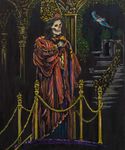 DATE 10/31/2025  DATE 10/28/2025 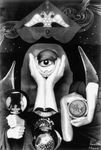 DATE 10/23/2025  DATE 10/22/2025 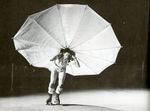 DATE 10/22/2025  DATE 10/21/2025  DATE 10/20/2025  DATE 10/16/2025  DATE 10/14/2025  DATE 10/11/2025  DATE 10/7/2025  DATE 10/6/2025 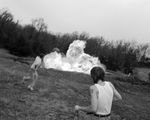 DATE 10/3/2025  DATE 10/1/2025  DATE 9/23/2025  DATE 9/21/2025 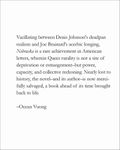 DATE 9/17/2025  DATE 9/10/2025  DATE 9/6/2025  DATE 9/4/2025  DATE 9/2/2025  DATE 9/1/2025  DATE 8/27/2025  DATE 8/25/2025  DATE 8/23/2025  DATE 8/21/2025  DATE 8/18/2025  DATE 8/15/2025  DATE 8/12/2025  DATE 8/9/2025  DATE 8/6/2025 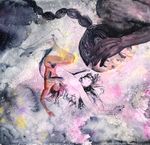 DATE 8/5/2025  DATE 7/31/2025  DATE 7/28/2025  DATE 7/25/2025  DATE 7/21/2025  DATE 7/18/2025  DATE 7/11/2025  DATE 7/3/2025  DATE 6/30/2025  DATE 6/26/2025  DATE 6/22/2025  DATE 6/20/2025  DATE 6/13/2025  DATE 6/12/2025  DATE 6/9/2025  DATE 6/5/2025  DATE 6/1/2025  DATE 5/29/2025  DATE 5/28/2025  DATE 5/23/2025  DATE 5/20/2025  DATE 5/16/2025  DATE 5/12/2025  DATE 5/8/2025  DATE 5/6/2025  DATE 5/4/2025  DATE 5/1/2025  DATE 4/24/2025  DATE 4/21/2025  DATE 4/17/2025  DATE 4/14/2025  DATE 4/10/2025  DATE 4/8/2025  DATE 3/31/2025  DATE 3/27/2025  DATE 3/27/2025  DATE 3/20/2025  DATE 3/18/2025  DATE 3/16/2025  DATE 3/15/2025 |
|